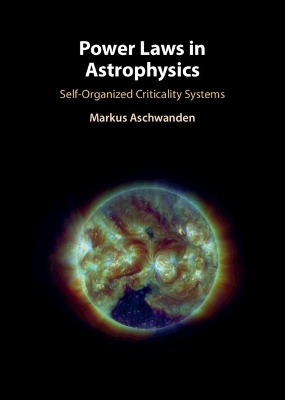
Power Laws in Astrophysics
Cambridge University Press (Verlag)
978-1-009-56293-5 (ISBN)
- Noch nicht erschienen (ca. Januar 2025)
- Versandkostenfrei
- Auch auf Rechnung
- Artikel merken
Research applications of complex systems and nonlinear physics are rapidly expanding across various scientific disciplines. A common theme among them is the concept of “self-organized criticality systems”, which this volume presents in detail for observed astrophysical phenomena, such as solar flares, coronal mass ejections, solar energetic particles, solar wind, stellar flares, magnetospheric events, planetary systems, galactic and black-hole systems. The author explores fundamental questions: Why do power laws, the hallmarks of self-organized criticality, exist? What power law index is predicted for each astrophysical phenomenon? Which size distributions have universality? What can waiting time distributions tell us about random processes? This is the first monograph that tests comprehensively astrophysical observations of self-organized criticality systems for students, post-docs, and researchers. A highlight is a paradigm shift from microscopic concepts, such as the traditional cellular automaton algorithms, to macroscopic concepts formulated in terms of physical scaling laws.
Markus Aschwanden studied observations and theoretical models of self-organized criticality systems over the last forty years as a researcher at Lockheed-Martin Solar and Astrophysics Laboratory, analyzing space data from many NASA missions. He has organized SOC-dedicated workshops at ISSI Bern and Leiden University. He served as Editor of Space Science Reviews and is member of the American Geophysical Union, the American Astronomical Society's Solar Physics Division, and the Committee of European Solar Radio Astronomers.
Foreword Paul Charbonneau; Preface; List of abbreviations; 1. Fundamentals; 2. Power-law size distributions; 3. Waiting-time distributions; 4. Solar flare hard X-rays; 5. Solar flare soft X-rays; 6. Solar EUV nanoflares; 7. Solar photospheric events; 8. Coronal mass ejection; 9. Solar energetic particle events (SEP); 10. Solar wind; 11. Magnetospheric phenomena; 12. Planetary systems; 13. Stellar systems; 14. Galactic and black-hole systems; 15. Conclusions; References; Index.
| Erscheint lt. Verlag | 31.1.2025 |
|---|---|
| Zusatzinfo | Worked examples or Exercises |
| Verlagsort | Cambridge |
| Sprache | englisch |
| Themenwelt | Naturwissenschaften ► Physik / Astronomie ► Astronomie / Astrophysik |
| Naturwissenschaften ► Physik / Astronomie ► Thermodynamik | |
| ISBN-10 | 1-009-56293-2 / 1009562932 |
| ISBN-13 | 978-1-009-56293-5 / 9781009562935 |
| Zustand | Neuware |
| Haben Sie eine Frage zum Produkt? |
aus dem Bereich


